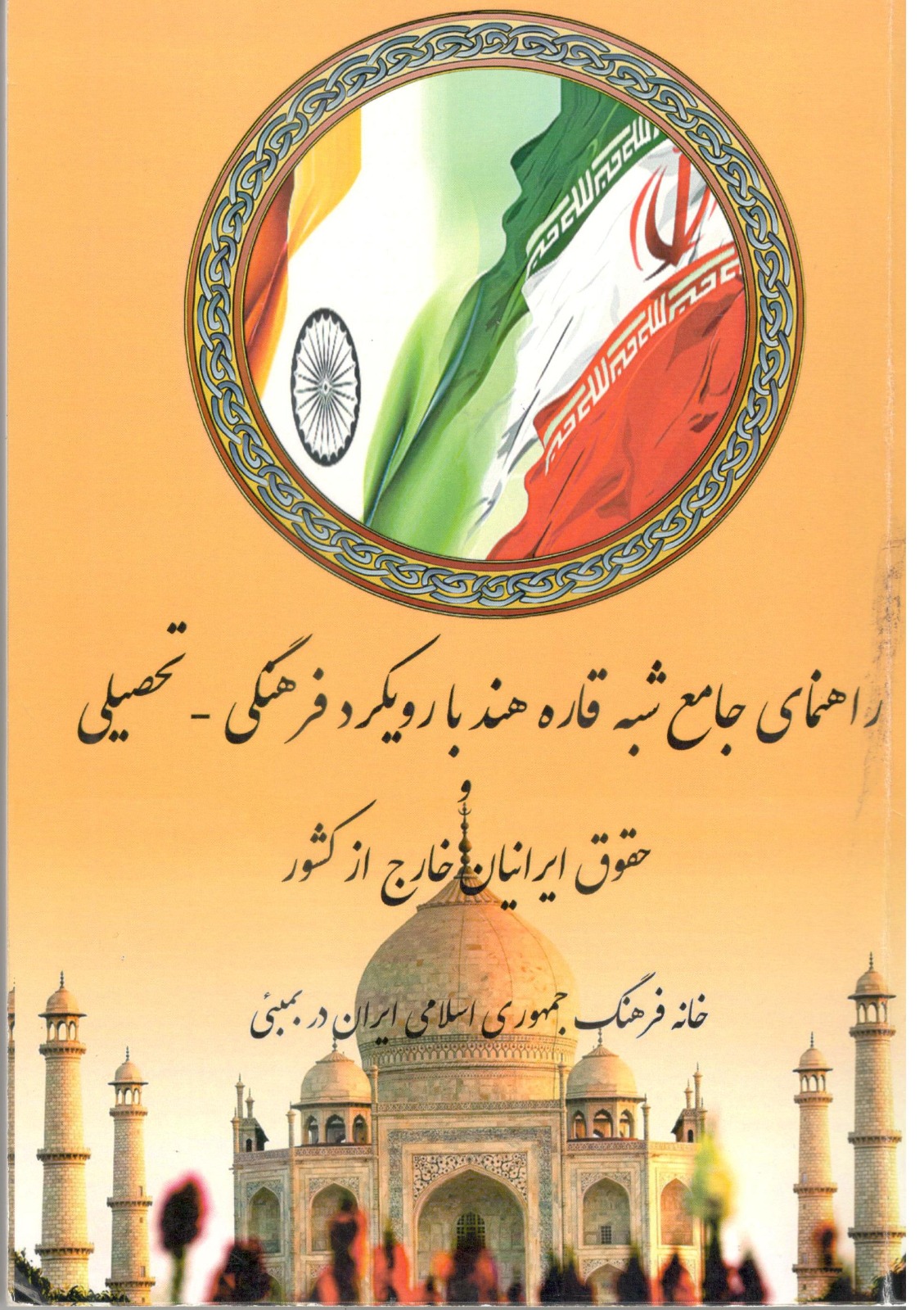Comprehensive Guide to the Indian Subcontinent Cultural-Educational Approach and the Rights of Iranians Abroad
The book “Comprehensive Guide to the Indian Subcontinent with a Cultural-Educational Approach and the Rights of Iranians Abroad” written by Dr. Seyyed Alireza Tabatabaei is dedicated to introducing India, Indian laws, and consular laws regarding students in three chapters and 22 chapters.

Comprehensive Guide to the Indian Subcontinent Cultural-Educational Approach and the Rights of Iranians Abroad
Introduction to the book:
Comprehensive Guide to the Indian Subcontinent
With a Cultural-Educational Approach and the Rights of Iranians Abroad
Author: Dr. Seyyed Alireza Tabatabaei
Year of Publication: 2018
Language: Persian
Number of Pages: 207
Publisher: Culture House of the Islamic Republic of Iran in Mumbai
The book “Comprehensive Guide to the Indian Subcontinent with a Cultural-Educational Approach and the Rights of Iranians Abroad” written by Dr. Seyyed Alireza Tabatabaei is dedicated to introducing India, Indian laws, and consular laws regarding students in three chapters and 22 chapters.
In the first part and in the introduction of the of Culture House of the Islamic Republic of Iran, as the publisher of this work, it is stated as follows:
India, an ancient land with remarkable cultural diversity, is the second most populous country in the world and the fourth largest economy in the world. With an area of more than three million square kilometres – slightly more than twice that of Iran – this country is located in South Asia and has experienced rapid economic growth over the past two decades; although this growth does not fully correspond to the level of per capita income of its people.
With freedom of expression, ethnic and cultural diversity, and rich natural resources, India is one of the most prominent countries in the world in terms of social freedoms and one of the most attractive international tourism destinations. Despite some shortcomings, especially in the field of public services, an unkempt face of this country is sometimes revealed; but colourful festivals and rituals, ancient temples, beautiful beaches, and the simple lifestyle of the people have turned India into a special and pleasant land.
On the other hand, Indian universities have a significant position among Asian countries. The scientific reputation of educational centres, English as the official language of instruction, and low tuition fees compared to many countries are factors that have always encouraged Iranian and international students to study in this country.
Considering the cultural and educational importance of the Indian subcontinent and the gap in comprehensive research resources in this field, the House of Culture of the Islamic Republic of Iran decided to prepare a scientific and practical work in this field. This responsibility was entrusted to the esteemed scholar, Dr. Seyyed Alireza Tabatabaei - who has been present in India for many years. With his expert perspective and the support of Narges Hashtami, he organized the book "A Comprehensive Guide to the Indian Subcontinent with a Cultural-Educational Approach and the Rights of Iranians Abroad"; a work that can be an effective guide for those interested in understanding India, studying in this country, and being aware of the rights of Iranians living abroad.
The author of the book states in his introduction that cultural elements have spread through the four main cradles of civilization in the world. These civilizations, from east to west, are: China, the Indian Subcontinent, the Iranian Plateau to the Mediterranean coastal crescent, and the Greek and Roman civilizations. Among these mega cultures, Indian culture has made a prominent contribution to the richness of global civilization and is more in line with pure Iranian culture in terms of spirit and meaning.
The book begins with a comprehensive look at the culture of the Indian subcontinent and brings together the most important cultural elements that have shaped this vision. On the other hand, India has long been an important educational destination for Iranian students.
The second chapter of the book is organized into three sections with the aim of guiding Iranian students to make the most of the educational opportunities in India:
• Pre-study guide
• Study guide
• Graduation guide
In the final section, the author addresses the lack of awareness among Iranians living abroad about their citizenship rights and has attempted to take a small step towards addressing this need. Undoubtedly, the first step in realizing the rights of citizens - both inside and outside the country - is awareness of these rights and conscious demand.

Write your comment.